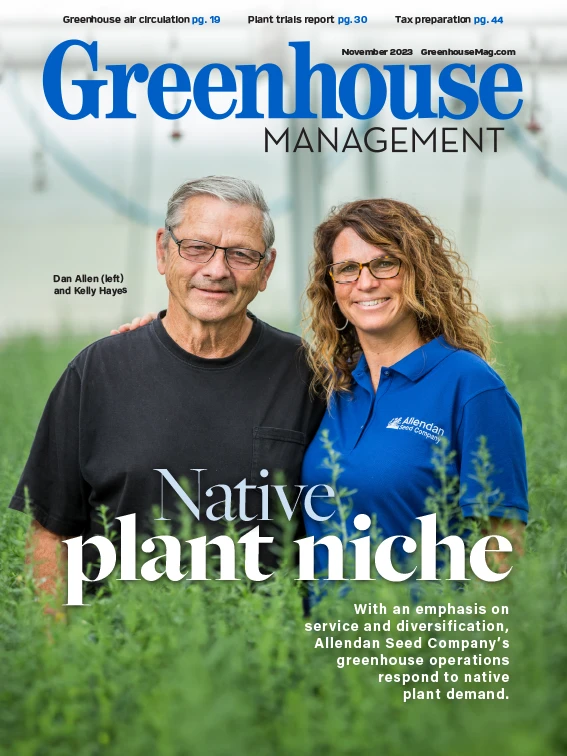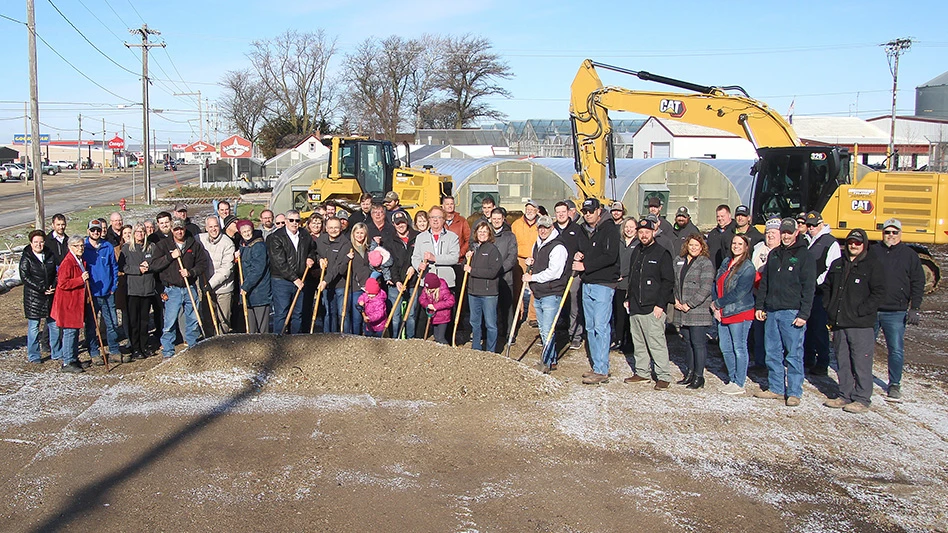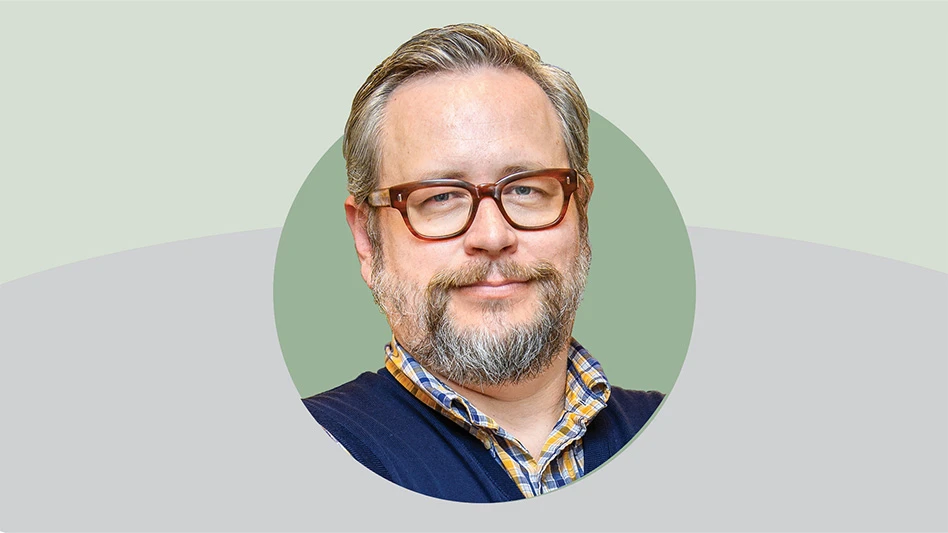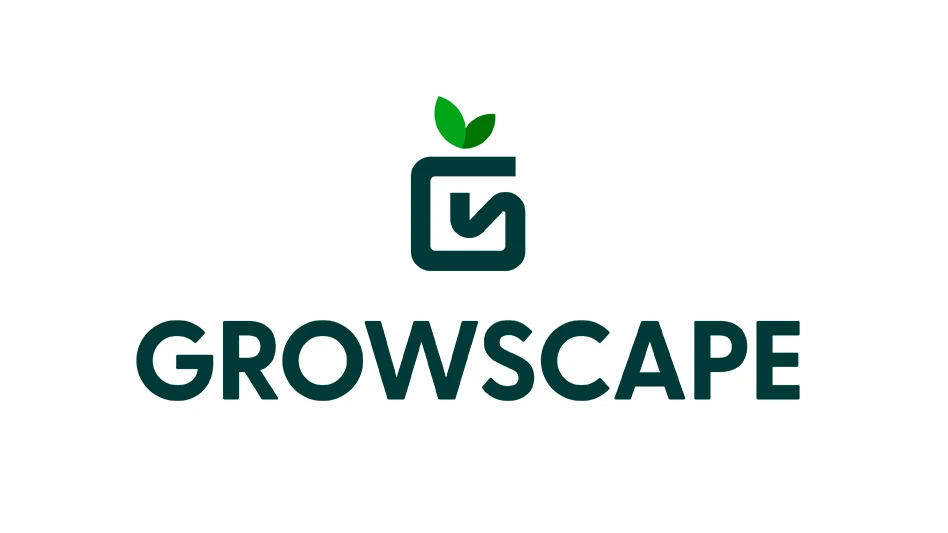
Thanks to Clint Eastwood and “The Bridges of Madison County,” people from around the world travel to south central Iowa to see its covered bridges every year. But for lucky visitors who time it right, Madison County holds more surprises: field after field of native prairie grass and wildflower seed production, bursting with breathtaking color and blooms.
Allendan Seed Company, the force behind the beauty, has grown from humble beginnings into one of the nation’s largest producers of native prairie seed. But wind down gravel roads, past Hogback Bridge and its backdrop of Allendan blooms, and you’ll discover the company’s flourishing greenhouse business built around native prairie plugs.
Growing from row crop beginnings
For Dan Allen, Allendan’s founder and CEO, diversification has been an essential business practice since the start. Fresh out of college in 1976, he started farming row crops. But he was already looking for other revenue streams. Interest in native plants had started in college, but he was more interested in buying groceries. “I thought it could be a profit center for something other than corn and soybeans,” he recalls.
In 1980, Allendan was born when Dan seeded 15 acres with Big Bluestem, a major component of the tallgrass prairie that once covered more than 80% of Iowa. The native market was mostly rangeland grasses and cultivars back then. He waited two years for his first seed crop. Then, as now, all machinery had to be re-engineered.


Widespread consumer interest in native prairie plants was still decades away. But government programs became Allendan milestones. The Conservation Reserve Program (CRP), signed into law in 1985, motivated landowners to shift environmentally sensitive land from agriculture to plantings focused on ecosystem restoration and environmental health. Those needs aligned perfectly with Allendan Seed.
The creation of the Neal Smith National Wildlife Refuge outside Prairie City, Iowa, proved instrumental to Allendan’s growth. Today, the Refuge spans 6,000 acres. But in the late 1980s, it was a dream in need of seed. Allendan got involved in collecting native seed for the project from Iowa’s remaining indigenous prairie sites — less than 1/10 of 1% of the state today.
The job called for diversification and innovation. “The Neal Smith project wanted everything they could get their hands on,” Dan recalls. “So we started growing plants and plugging them out in a production field so we could get clean monocultures and increase seed production.”
When the Neal Smith project eventually wrapped, Allendan was able to certify the origin of its remaining seed with Iowa’s official seed certifying agency. The paper trail for much of Allendan production traces back to that original hand-collected remnant prairie seed.
In the late 1990s, as state and federal programs began requiring plants of native origin in efforts to limit invasive plants, Allendan was perfectly positioned. The Department of Transportation became one of the company’s largest clients.
Today, Allendan produces more than 200 species of native prairie grasses, wildflowers, sedges and rushes, and manages about 10,000 acres of Iowa land, considered some of the world’s best soil. Crop rotation pits about 6,000 of those acres in native seed production each year. About 50% of plant material stays in the Midwest. The rest ships nationwide, with Allendan’s greenhouse operations fueling it all.

Expanding greenhouse operations one house at a time
Through the years, gaining ground on seed production with greenhouse-grown plugs offered challenges and opportunities. In the beginning, Allendan hired other greenhouses, in state and out, to grow their plant material and ship it in. “Then we plugged it into monoculture production fields from there,” Dan says.
Kelly (Allen) Hayes, director of greenhouse operations, is the youngest of Dan’s four children, who all run divisions of the family business. “It was a challenge because you had to ship the plants,” she explains. “We had a few instances where, being shipped in the truck, by the time the plants got here, they were just not in as great a condition as what they could be if you just grew them yourself.”
“Not to say anything about any other greenhouses, but we basically had to start growing our own materials to get the quality that we needed to get put out in the field to get the production that was being required,” Dan adds.
Kelly jokes that greenhouse operations probably started because they needed something for her to do. Right out of college, she worked on a garden show for PBS. Then the Y2K/dot.com bubble burst, the show fell through and she came back home “just looking to pull weeds for a while” until she found another job. But the timing was right, and she dove into the business as the new millennium hit.
With custom-grown plugs shipping in, the company needed a better holding area. First up was an outdoor nursery space, but deer took a liking to the buffet. Next came a deer-proofed shade structure. Then, in 2006, the first Quonset greenhouse.
“We kind of always approach things like ‘Well, it can’t be that hard.’ Then we draw on ourselves,” Kelly says. She took some classes at Des Moines Area Community College, and the greenhouse division was in business.
Through the years, Allendan’s greenhouse space grew. One 30-foot x 100-foot Quonset led to three. A polycarbonate gutter greenhouse, double that size, came next. Most recently, a 120-foot x 96-foot four-bay, gutter-connected greenhouse doubled the company’s greenhouse production space. Greenhouses, expanded shade structures and drip-irrigated nursery space for some labor-intensive seed production in pots, comprise about acres — all nestled around the Allen homestead.
The company remains its own biggest plug customer. Kelly’s greenhouse teams, headed up by production coordinator Teresa Frome, annually grow more than two million plugs of native prairie plants for planting in Allendan’s seed production fields.
But as the public’s interest in native plants and prairies comes in line with Allendan’s evolving vision, more and more of those plugs are finding new homes.

Sharing native benefits and providing solutions
“When people are asking for something, our answer is always yes,” Kelly says. “Then we just kind of make it happen.” That attitude supports growth in Allendan’s greenhouse sales to governmental agencies and landscapers as well as end consumers.
Through the years, the company built and nurtured relationships with city, county, state and federal agencies, providing plant material for prominent native plant projects too numerous to list. And though greenhouse operations primarily supported seed production, there were always some extra plugs for public sales.
Agencies and landscapers needing a certain plant or look or function — whether for outdoor classrooms, rain gardens, bioswales, home landscapes or sweeping, large-scale installations — learned where to turn for plants and help. “It has just kind of grown by word of mouth,” Kelly says.
This year, the company decided on a new approach to public plug sales. Inspired by helping others, they published a catalog, revamped their website for online sales and dedicated a greenhouse to plug sales in anticipation of demand. Then they designed groupings to help people understand which species would meet certain planting goals — from bees, butterflies and songbirds to deer, pheasants and quail, to simple aesthetics.
Under names like Pollinator Plug Packs, Monarch Medleys and Color Blast Collections, they offered plugs in groups of six, 12, 24 or flats of 38. “The plug sales have increased exponentially this year, just because of our presence on the website,” Kelly says. Dan adds, “It’s a project. It’s a whole new avenue, a whole new department.”


Teresa describes this spring’s production process as a “well-choreographed dance” of seeding 512-trays, transplanting to 38s and moving plugs under shade to make more space. More than 8,600 square feet of table space was devoted to doubling last year’s plug sales. Between 2023’s spring and fall crops, about 20,000 plugs representing 100 native species were grown for public sale — and sold.
Teresa says business supplying other greenhouses is growing, too. And when greenhouses want gallons, the production team obliges, pots up plugs and grows the gallons customers desire. For now, containers stay in line with regular production. But Kelly adds, “As we see more demand, we would definitely explore that.”

Satisfying native demand for the future
As Kelly looks to the immediate future, she’s focused on improving what they’ve started. “The website sales was a new approach, a new addition to what we're doing. So we're just kind of looking at that and exploring different possibilities with what we started this year,” she says.
Dan attributes part of his success to the fact that all four of his children work in the business. Looking down the road to a third generation of Allendan leaders, Kelly says the next generation is still young and exploring, so it’s too early to call. But Dan just laughs and says, “None of my kids were interested, but they just came back.”
As people become more in tune with the biodiversity, beauty and benefits of native prairie plants, Dan says Allendan Seed Company will be here to help.
“This material comes initially from the original Iowa ecology, and the ecology itself is craving this material,” he says. “But the ecology itself is not an individual. It doesn't have a checkbook. For people that are interested in supporting the original ecological environment, we provide the material, if that’s their desire.”
Whatever comes next, the Allendan team will meet it the same way Dan has for the last 40-plus years. “It is just one foot in front of the other. Get up and do what you have to do the next day. It never ends,” he says.

Explore the November 2023 Issue
Check out more from this issue and find your next story to read.
Latest from Greenhouse Management
- Pennsylvania Horticultural Society shares top gardening trends from 2025 Philadelphia Flower Show
- California Spring Trials 2026 dates announced
- Les Evans promoted to DRAMMwater segment manager, Al Zylstra to retire
- Hoffmann Family of Companies to acquire N.G. Heimos Greenhouses
- GIE Media Horticulture Group wins five regional 2025 Azbee Awards of Excellence
- Grant awarded to test western U.S. wood species for use as wood fiber potting substrate
- Pennsylvania Horticultural Society announces 2025 Gold Medal Plant winners
- Oasis Grower Solutions announces new Southeast territory sales manager





